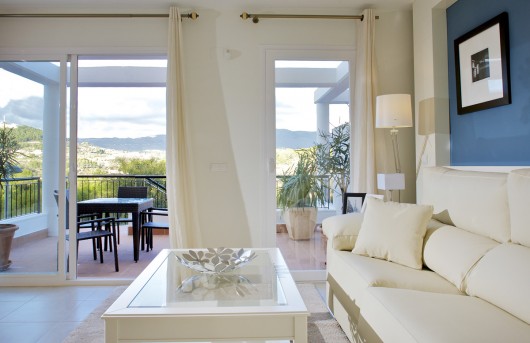The number of properties bought in Spain by foreigners rose for five consecutive quarters between 2011 and 2012 as they took advantage of falling prices.
The third quarter of last year saw the greatest rise in home sales to foreigners, 18% more than the equivalent quarter in 2011 and a total of 8,803 transactions, official housing figures show.
This followed a 15.3% rise in the second quarter of 2012 and a 16.2% increase in the first three months of the year. Most demand was concentrated in coastal areas with Málaga on the Costa del Sol, posting the second highest number of home purchases by foreigners, beaten only by Alicante.
However, the sudden surge in interest could result in a shortage of the kind of properties that people actually want to buy. ‘With the domestic market in hibernation, some of the responsibility for recovery has fallen on to international shoulders but, certainly in the Marbella area, they tend to want the very best homes on the market and these are in short supply,’ said Nick Stuart, director of estate agent Spanish Hot Properties.
‘There are very few top quality modern villas or frontline beach apartments available and the old fashioned Andalucian style finca doesn’t have the same appeal any more. It really is slim pickings,’ he added.
Stuart explained that since 2010 there has only been one developer on the Costa del Sol actively building luxurious new apartments and penthouses and none have been in prime locations. ‘2010 was a key year as various guidelines on energy efficient building became law and this made construction much more expensive leaving new builds over priced in comparison to existing property, especially those with discounts attached. These so called bargains can be bought below replacement value but, although there are thousands of them for sale, your luxury property buyer simply isn’t interested in them,’ he said.
He has also found that buyers still expect to find rock bottom prices that really don’t exist in the better end of the market. ‘Prime property in a prime location is rarely discounted as constant demand puts pay to that,’ he explained.
Demand from international buyers for the best properties is set to rise if the plan outlined by the Spanish government to offer residency to non European Union buyers goes ahead, he pointed out.
The latest figures from the Spanish government on construction show that there were just 3,106 planning approvals for new residential homes in November, down 32% on the previous year and down 95% compared to 2006.
According to Mark Stucklin of Spanish Property Insight there are several reasons for the collapse in planning approvals, including a glut of new homes already on the market, and weak demand due to the economic crisis. But the main reason is the lack of financing available to developers.
‘There are already signs of a shortage of the type of new homes that people actually want, which will get worse in the next few years, thanks to long lead times in the home building business. It typically takes 36 months or more from drawing board to delivery,’ he said.
Meanwhile the latest Fotocasa index shows that resale asking prices were stable in January after 36 consecutive months of declines. Asking prices averaged €1,890 per square meter in January, almost the same as in December and the first time there has been no monthly decline in prices since February 2010.
According to Fotocasa, asking prices actually rose in certain regions including Murcia which was up 1%, The Canaries up 0.7% and Andalucia also up 0.7%.



